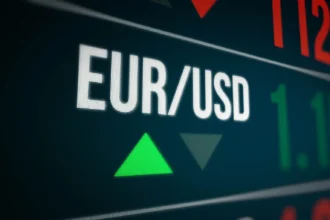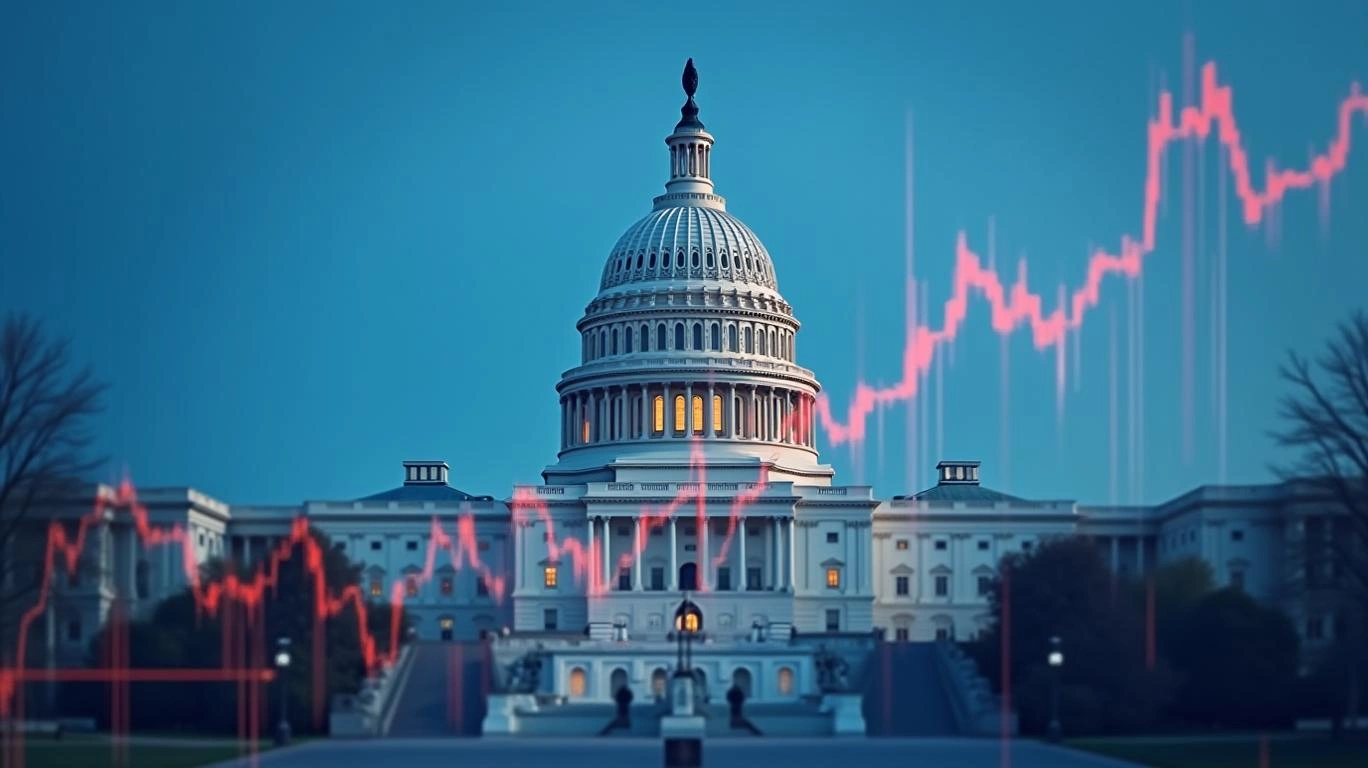U.S. stock futures advanced on Monday, buoyed by reports that President Donald Trump may opt for a less aggressive approach to planned trade tariffs, easing investor jitters and reviving risk appetite. Meanwhile, Canada’s surprise snap election announcement and upcoming U.S. PMI data are adding additional layers of uncertainty to the global economic outlook.
Investors entered the week cautiously optimistic, with sentiment boosted by Bloomberg News reports that Trump’s widely anticipated April 2 tariff announcement may be more targeted than initially expected. While trade tensions remain elevated, the latest news suggests that the most extreme scenarios may be avoided, at least for now.
Futures Rise on Easing Trade Tensions
By early morning trading, U.S. stock futures were firmly in positive territory. As of 04:49 ET (08:49 GMT), the Dow Jones Industrial Average futures rose by 330 points or 0.8%, S&P 500 futures climbed 58 points or 1.0%, and Nasdaq 100 futures gained 245 points or 1.2%.
All major U.S. indices closed last week with solid gains, driven in part by Trump’s comments hinting at potential flexibility in his trade policy. The S&P 500, Nasdaq Composite, and Dow Jones all ended higher, reversing earlier fears of a sharp correction tied to sweeping tariffs.
While the market is reacting positively to these developments, analysts remain cautious. Sectors sensitive to economic cycles — including semiconductors, materials, and small-cap stocks — showed limited momentum, reflecting ongoing worries about the broader implications of a trade war.
“Markets are in relief mode, but this reprieve could be short-lived if the rhetoric escalates again,” warned a senior strategist at Vital Knowledge.
Trump’s Tariff Plans Appear More Targeted
According to Bloomberg News, Trump is now considering a more focused approach to tariffs as part of an April 2 announcement, which coincides with “Liberation Day.” Initially, Trump had floated the idea of imposing blanket tariffs on multiple countries and sectors to address perceived trade imbalances. However, advisers and close allies suggest that the revised plan could spare some nations or trade blocs, offering a selective exemption list based on U.S. trade surpluses.
While the tariffs are still expected to represent a significant escalation in Trump’s protectionist strategy, markets welcomed the possibility of a narrower application, which may reduce the risk of full-blown retaliatory measures from key trade partners.
“Targeted is obviously better than blanket tariffs, but this is still a notable shift in U.S. trade policy and could weigh on economic growth and corporate margins,” Vital Knowledge analysts noted.
Trump’s plan reportedly stops short of unveiling sector-specific tariffs, such as those on automotive or technology goods, which had been feared by investors. However, he is still expected to introduce immediate tariff hikes on select imports, potentially triggering swift countermeasures from affected nations.
Canadian Prime Minister Calls Snap Election Amid Tariff Tensions
In a surprise political twist, Canadian Prime Minister Mark Carney announced a snap election scheduled for April 28. Carney, who took office on March 14 following a leadership shake-up within the Liberal Party, cited the need for a fresh mandate as Canada faces escalating threats from the Trump administration.
Relations between Ottawa and Washington have deteriorated since Trump’s return to office earlier this year. The U.S. has already imposed steel and aluminum tariffs on Canadian exports and hinted at broader levies targeting dairy, lumber, and other key sectors.
Tensions flared further after Trump suggested that Canada could eventually become America’s “51st state,” sparking backlash from Canadian officials and the public. In response, Ottawa has implemented its own retaliatory tariffs and vowed to defend Canadian sovereignty and trade interests.
“Trump’s tariffs and rhetoric represent the most significant crisis of our lifetimes,” Carney said on Sunday, framing the election as a referendum on how best to navigate the growing rift with the U.S.
Economists warn that Canada’s economy, which relies heavily on exports to its southern neighbor, could face significant headwinds if tariff threats materialize further. Investors are now watching closely to see how the snap election may shift Canada’s trade and economic policy in the weeks ahead.
PMI Data and U.S. Inflation in the Spotlight
Beyond geopolitical concerns, markets are laser-focused on upcoming economic data, particularly the S&P Global Composite PMI reading due this week. In February, the index — which measures activity across the U.S. manufacturing and services sectors — came in at 51.6, barely above the 50 threshold that signals expansion.
Preliminary forecasts suggest a slight decline to 51.5 in March, raising concerns about a potential slowdown. Notably, the flash PMI reading last month hit a 17-month low at 50.4, highlighting increased corporate and consumer anxiety surrounding Trump’s trade policy.
“The combination of soft PMIs and escalating trade tensions could be a drag on risk assets if the data weakens further,” said one market strategist.
Later this week, the Personal Consumption Expenditures (PCE) price index — a key inflation metric closely watched by the Federal Reserve — will also be released. While the Fed kept interest rates unchanged at its latest meeting, Chair Jerome Powell acknowledged that inflation pressures remain elevated while consumer spending is showing signs of cooling.
Gold Choppy as Tariff Risk Eases, Dollar Softens
Gold prices hovered near the flatline on Monday, pressured by improving risk sentiment following reports of a softer U.S. tariff stance. Spot gold traded marginally lower but remained within striking distance of recent highs, supported by lingering uncertainty surrounding global trade.
A weaker U.S. dollar capped gold’s losses, while industrial metals posted modest gains, reflecting hopes that targeted tariffs may limit the negative impact on global supply chains and manufacturing demand.
“Gold remains underpinned by geopolitical risk, but easing fears of a severe tariff shock is reducing immediate safe-haven demand,” said a commodities analyst.
Beyond trade headlines, investors are also closely monitoring developments in Ukraine, where ceasefire talks are ongoing, and tensions in the Middle East, which continue to underpin some level of haven demand for gold.
Market Outlook: Relief Rally or Temporary Calm?
With the near-term risk of blanket tariffs appearing to recede, markets are staging a relief rally. However, most analysts agree that volatility is likely to persist as investors navigate a complex landscape of geopolitical, macroeconomic, and monetary policy risks.
“For now, markets are breathing easier, but headline risk is still elevated,” noted a senior trader at a major investment bank. “Both Trump’s final tariff announcement and Canada’s snap election could be pivotal for risk sentiment in the coming weeks.”
Key Takeaways:
- U.S. stock futures rise as Trump’s tariff plans appear less aggressive than feared.
- Canadian Prime Minister Mark Carney calls a snap election amid escalating U.S.-Canada trade tensions.
- Investors await PMI and PCE inflation data to gauge the U.S. economic outlook.
- Gold stabilizes as risk appetite returns but remains supported by broader geopolitical uncertainty.
- Analysts warn that volatility may remain elevated as markets digest these developments.
As markets move deeper into the week, traders will be paying close attention to Trump’s final tariff details on April 2 and economic data that could shape the Federal Reserve’s next steps.
Disclaimer:
The information provided in this article is for informational and educational purposes only and does not constitute financial advice, investment advice, trading advice, or any other type of advice. The content reflects the opinions of the author and may not represent the views of any financial institution or regulatory body. Always conduct your own research and consult with a licensed financial advisor before making any investment decisions. Trading and investing in financial markets involves substantial risk, and you could lose your entire investment. The author and publisher of this article are not responsible for any losses or damages resulting from the use of this information.



